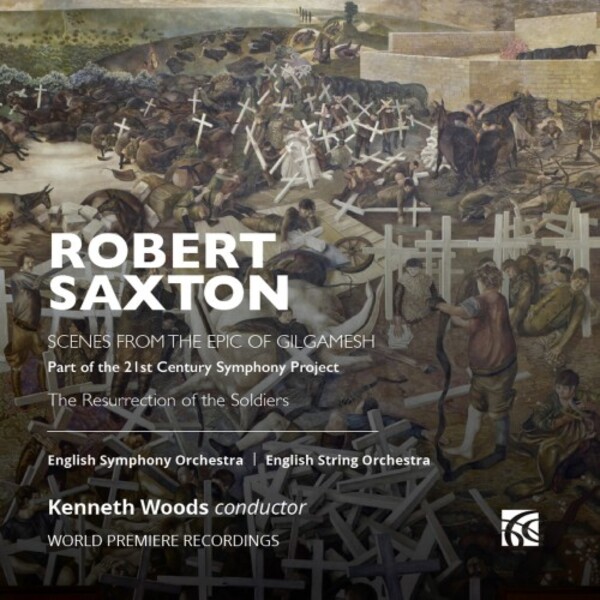
Saxton - Scenes from The Epic of Gilgamesh, The Resurrection of the Soldiers
£13.25
Despatch Information
This despatch estimate is based on information from both our own stock and the UK supplier's stock.
If ordering multiple items, we will aim to send everything together so the longest despatch estimate will apply to the complete order.
If you would rather receive certain items more quickly, please place them on a separate order.
If any unexpected delays occur, we will keep you informed of progress via email and not allow other items on the order to be held up.
If you would prefer to receive everything together regardless of any delay, please let us know via email.
Pre-orders will be despatched as close as possible to the release date.
Label: Nimbus - Alliance
Cat No: NI6447
Format: CD
Number of Discs: 1
Genre: Orchestral
Expected Release Date: 5th July 2024
Contents
Artists
English Symphony OrchestraEnglish String Orchestra
Conductor
Kenneth WoodsWorks
Scenes from The Epic of GilgameshThe Resurrection of the Soldiers
Artists
English Symphony OrchestraEnglish String Orchestra
Conductor
Kenneth WoodsAbout
There are five movements/scenes: The first, Prologue, echoes the anxious state of the city of Uruk, which is suffering under the despotic rule of the young King Gilgamesh. The gods, in order to restore a sense of balance, create his counterpart, the wild man Enkidu, who is lured away and tamed by a temple prostitute. The pitch centres of this scene spell out the musical letters of Gilgamesh which also underly the entire work. The Journey to the Forest of Cedar depicts the effortful trek made by Enkidu and Gilgamesh in search of glory. They venture to the Forest of Cedar to cut down one of the largest trees to make a great door for the Temple of Enlil, the divine ruler of the Cosmos. They kill the forest guardian, Humbaba, who is protected by seven auras. From Dawn to Dusk, a fast movement, illustrates Gilgameshís race against the sun. He arrives just before sunset and finds himself in a garden of jewels. Gilgamesh sings a Lament on the Death of Enkidu which leads into the final scene. Apotheosis: Gilgamesh visits Ut Napishti (precursor of Noah in Genesis) who has survived the Flood and been granted immortality by the gods. Gilgamesh fails the final task set by Ut-Napishti to test his suitability for eternal life, returning to Uruk to build his lasting monument, the city walls.
The Resurrection of the Soldiers for string orchestra was commissioned by George Vass, to whom it is dedicated, and the English Symphony Orchestra, for the 2016 Presteigne Festival, with funds generously donated by the John S Cohen Foundation and the Arts Council of England. The title derives from the final panel of Stanley Spencerís Sandham Chapel visionary series of paintings which were the result of Spencerís experiences in the British army in World War One and depicts soldiers emerging from their graves on the last day. The piece is in three continuous parts: a slow, sustained introduction which is, in essence, a descent from the note E by means of a prolation canon, but which ascends to a rather intense climactic point before falling and giving way to a very active fugue which, after arriving at an anguished, sustained climax, is succeeded by a closing slow movement consisting of a rising melodic line which permeates the entire texture heterophonically, leading to the closing E major triad. The work thus traces a cyclical path as it progress towards a sense of resurrection, re-birth and hope.
Error on this page? Let us know here
Need more information on this product? Click here